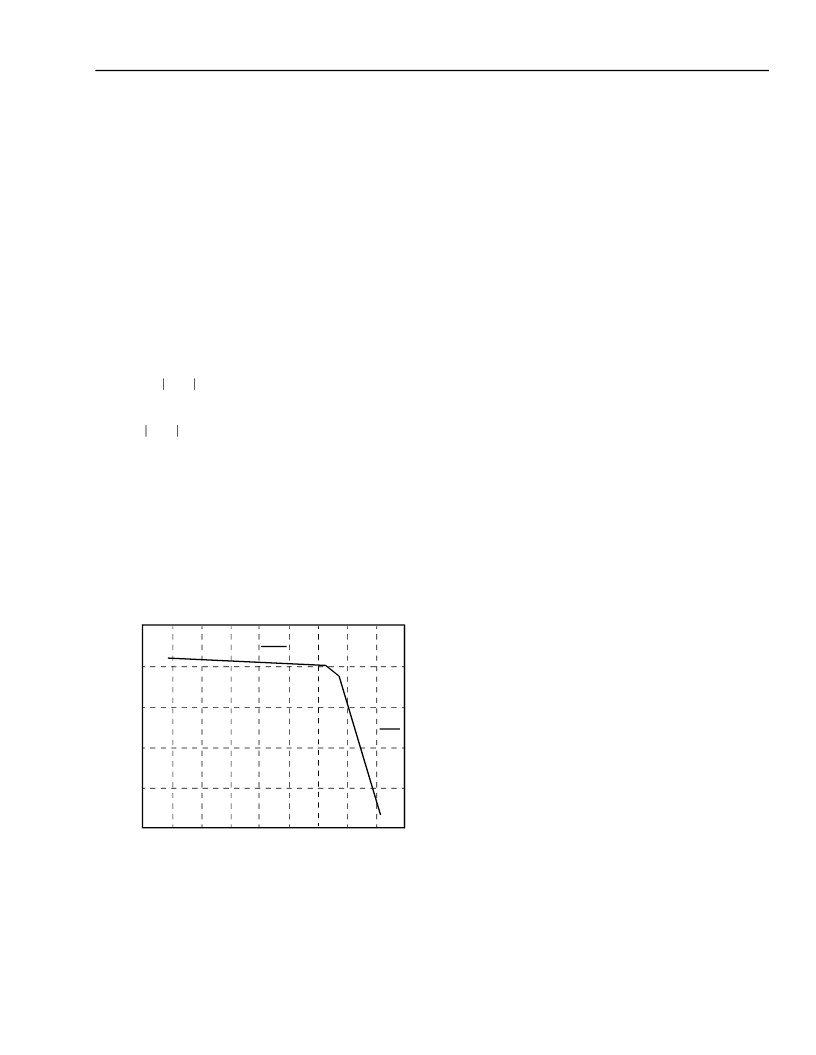- 您現(xiàn)在的位置:買賣IC網(wǎng) > PDF目錄367614 > LUCL9312GP-DT Line Interface and Line Access Circuit Forward Battery SLIC and Ringing Relay for TR-57 Applications PDF資料下載
參數(shù)資料
| 型號(hào): | LUCL9312GP-DT |
| 英文描述: | Line Interface and Line Access Circuit Forward Battery SLIC and Ringing Relay for TR-57 Applications |
| 中文描述: | 線路接口和線路接入電路轉(zhuǎn)發(fā)電池SLIC和振鈴繼電器的訓(xùn)練班- 57應(yīng)用 |
| 文件頁數(shù): | 27/40頁 |
| 文件大?。?/td> | 709K |
| 代理商: | LUCL9312GP-DT |
第1頁第2頁第3頁第4頁第5頁第6頁第7頁第8頁第9頁第10頁第11頁第12頁第13頁第14頁第15頁第16頁第17頁第18頁第19頁第20頁第21頁第22頁第23頁第24頁第25頁第26頁當(dāng)前第27頁第28頁第29頁第30頁第31頁第32頁第33頁第34頁第35頁第36頁第37頁第38頁第39頁第40頁

Data Sheet
July 2001
Forward Battery SLIC and Ringing Relay for TR-57 Applications
L9312 Line Interface and Line Access Circuit
Agere Systems Inc.
27
Applications
(continued)
dc Characteristics
(continued)
Battery Feed
(continued)
As illustrated in Figure 12, as loop length decreases,
the tip to ground voltage will decrease with a slope cor-
responding to one-half the internal dc feed resistance
of the SLIC (typical 75
). The ring to ground voltage
will also decrease with a slope corresponding to one-
half the internal dc feed resistance of the SLIC, until the
SLIC reaches the current-limit region of operation. At
that point, the slope of the ring to ground voltage will
increase to the sum of one half the internal dc feed
resistance plus approximately 10 k
.
The dc feed characteristic can be described by:
I
LOOP
=
V
T/R
=
Where:
I
LOOP
= dc loop current.
V
T/R
= dc loop voltage.
V
BAT
= battery voltage magnitude.
V
OH
= overhead voltage.
R
LOOP
= loop resistance, including wire and handset
resistance.
R
P
= protection resistance.
R
dc
= SLIC internal dc feed resistance.
12-3050.g (F)
Notes:
V
BAT1
= –48 V.
V
BAT2
= –24 V.
I
LIM
= 40 mA (R
PROG
= 66.5 k
).
Figure 13. L9312 Loop Current vs. Loop Voltage
Refer to Figure 12 and Figure 13 in this section and to
Figure 11 in the Automatic Battery Switch section.
Starting from the on-hook condition and going through
to a short circuit, the curve passes through two regions:
Region 1: on-hook and low loop currents: the slope cor-
responds to the dc feed resistance of the SLIC (plus
any series resistance). The open-circuit voltage is the
battery voltage less the overhead voltage of the device.
Region 2: current limit: the dc current is limited to a
value determined by V
PROG
. This region of the dc tem-
plate has a high resistance (10 k
).
Notice that the I-V curve is uninterrupted when the
power is shifted from the high-voltage battery to the
low-voltage battery (if auxiliary battery option is used).
This is shown in Figure 11 in the Automatic Battery
Switch section.
Longitudinal to Metallic Balance
Longitudinal to metallic balance at PT/PR is specified in
the Electrical Characteristics section of this data sheet.
Supervision
Loop Closure
Loop closure supervision threshold is programmed via
an applied voltage source or ground, through a resistor
at the LCTH input. Loop closure status is presented at
the NSTAT output. NSTAT is an unlatched output that
represents either the loop closure or ring trip status,
depending on the device state. See Table 2 for more
details. Loop closure threshold current (I
LCTH
) is set by:
= I
LCTH
(mA)
where:
R
LCTH
is a resistor from the LCTH node to ground or a
voltage source.
V
LCTH
is ground or an external voltage source.
There is a built-in hysteresis associated with the loop
closure detector. The above equation describes the on-
hook to off-hook threshold. To help prevent false
glitches, the off-hook to on-hook threshold will be a typ-
ical 20% lower than the corresponding on-hook to off-
hook threshold.
BAT
V
OH
–
R
LOOP
2R
P
R
dc
+
+
----------V
BAT
R
LOOP
V
OH
2R
P
+
–
----V
)
R
LOOP
R
dc
+
L
0
5
10
25
0
20
30
40
50
LOOP VOLTAGE (V)
15
20
10
1
R
dc
30
45
35
40
1
10 k
REF
R
LCTH
k
V
LCTH
)
–
(
)
250 V
相關(guān)PDF資料 |
PDF描述 |
|---|---|
| LUCL9312AP-D | Line Interface and Line Access Circuit Forward Battery SLIC and Ringing Relay for TR-57 Applications |
| LUCL9312AP-DT | PLCC-Socket-Adapter 32-pin DIL to 32-pin PLCC for 8-Bit EPROMs |
| LUCL9500 | High-Voltage Ringing SLIC for VolP Applications |
| LUCL9500ARG-D | High-Voltage Ringing SLIC for VolP Applications |
| LUCL9500AGF-D | High-Voltage Ringing SLIC for VolP Applications |
相關(guān)代理商/技術(shù)參數(shù) |
參數(shù)描述 |
|---|---|
| LUCL9313AP-D | 制造商:AGERE 制造商全稱:AGERE 功能描述:Line Interface and Line Access Circuit Full-Feature SLIC and Ringing for TR-57 Applications |
| LUCL9313AP-DT | 制造商:AGERE 制造商全稱:AGERE 功能描述:Line Interface and Line Access Circuit Full-Feature SLIC and Ringing for TR-57 Applications |
| LUCL9313GP-D | 制造商:AGERE 制造商全稱:AGERE 功能描述:Line Interface and Line Access Circuit Full-Feature SLIC and Ringing for TR-57 Applications |
| LUCL9313GPDT | 制造商:AGERE 功能描述:New |
| LUCL9313GP-DT | 制造商:AGERE 制造商全稱:AGERE 功能描述:Line Interface and Line Access Circuit Full-Feature SLIC and Ringing for TR-57 Applications |
發(fā)布緊急采購,3分鐘左右您將得到回復(fù)。